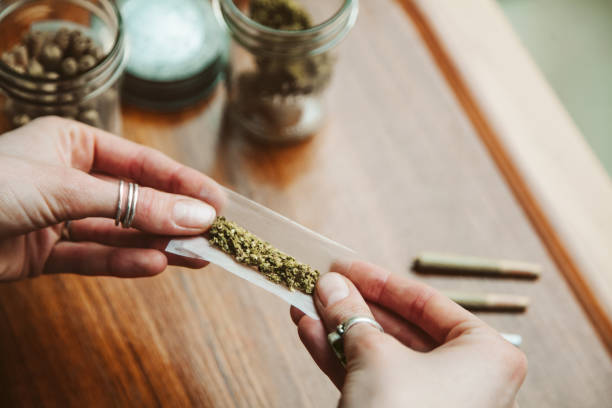If you’ve decided to quit marijuana, understanding the withdrawal process is key to helping you navigate the path to sobriety. Contrary to popular belief, marijuana can cause withdrawal symptoms, especially for those who’ve used it regularly over a long period. While marijuana withdrawal isn’t as intense as with other substances, the symptoms can still be uncomfortable. Knowing what to expect and how long the process will last is crucial for anyone planning to quit. In this blog, we’ll explore the marijuana withdrawal timeline, key facts, symptoms, and tips to manage the process effectively.
What Is Marijuana Withdrawal?
Marijuana withdrawal occurs when someone who has been using marijuana regularly, often daily, stops using the drug. The brain has adapted to the presence of cannabinoids over time, so when marijuana use suddenly stops, it can take a while for the brain to readjust. This readjustment leads to a range of withdrawal symptoms, which can vary in intensity based on the duration of use, the amount consumed, and individual differences.
The Marijuana Withdrawal Timeline
When someone quits marijuana, withdrawal symptoms don’t appear immediately. Instead, the process typically unfolds over several weeks, with symptoms peaking at different times. Here’s a breakdown of what you can expect during the marijuana withdrawal timeline:
First 24-72 Hours: The Beginning
For most people, symptoms begin to surface within the first 24-72 hours after quitting. The body starts to react to the absence of THC, which is the psychoactive compound in marijuana. During this initial phase, the most common symptoms include:
Irritability and mood swings
Anxiety or restlessness
Difficulty sleeping or insomnia
Headaches
The intensity of these symptoms will vary from person to person, depending on the frequency and amount of marijuana they use. Some may feel a sense of unease or general discomfort, but it’s important to remember that these feelings will eventually pass.
Days 4-7: Peak Withdrawal
As the marijuana withdrawal timeline progresses, symptoms usually peak around days 4 to 7. This is often the most challenging part of the process for those going through withdrawal. Common symptoms during this period include:
Strong cravings for marijuana
Intense anxiety or agitation
Mood disturbances, such as depression or irritability
Vivid or unsettling dreams
Loss of appetite or nausea
The cravings for marijuana can feel overwhelming at this stage, and many people experience an urge to return to their old habits. However, it’s important to stay focused on the long-term goal of sobriety and not give in to the temptation to use again.
Days 7-14: Easing of Symptoms
After the first week, withdrawal symptoms generally begin to ease. The body and brain have started to adjust to the absence of marijuana, though some symptoms can still linger. Most people will notice a reduction in the intensity of mood swings, anxiety, and cravings. However, it’s common for some individuals to still struggle with:
Difficulty sleeping
Low energy levels or fatigue
Mild irritability or mood swings
While the worst of the withdrawal may be over, it’s important to continue practicing healthy coping strategies, such as exercise, meditation, or seeking support from friends or family.
Weeks 3-4: Residual Symptoms
By the third or fourth week, most people feel significantly better. Sleep patterns have usually returned to normal, and mood swings or anxiety have greatly diminished. However, some residual symptoms may persist, especially for heavy users. These can include:
Occasional cravings for marijuana
Subtle mood disturbances
Lack of motivation or mild fatigue
These symptoms are usually much milder than those experienced in the first week, and with time, they will gradually fade. The key to managing this period is to remain patient and focus on the progress you’ve made.
Factors That Affect Marijuana Withdrawal
It’s important to note that the marijuana withdrawal timeline can vary based on several factors, including:
Frequency and Duration of Use: The more regularly and heavily you’ve used marijuana, the more likely you are to experience more intense withdrawal symptoms.
Individual Biology: Each person’s brain chemistry is different, which can affect how long withdrawal symptoms last and how severe they are.
Mental Health: People with pre-existing anxiety, depression, or other mental health issues may find marijuana withdrawal more challenging, as these symptoms can be exacerbated.
Support Systems: Those who have strong support networks, access to professional help, or coping strategies in place may find the withdrawal process easier to manage.
Coping Strategies for Marijuana Withdrawal
If you’re going through marijuana withdrawal, several strategies can help you manage symptoms and stay on track:
Stay Active: Physical exercise can boost your mood and help reduce cravings. Even a short walk or a quick workout can make a difference.
Establish a Routine: Having a daily routine can help distract you from cravings and manage mood swings.
Eat Healthily: Maintaining a balanced diet can help restore energy levels and promote overall well-being.
Stay Hydrated: Drinking plenty of water can help flush THC from your system and ease physical symptoms like headaches.
Seek Support: Don’t hesitate to reach out to friends, family, or support groups. Talking to someone who understands your situation can make a big difference.
FAQs About Marijuana Withdrawal Timeline
1. How long does marijuana withdrawal last?
The marijuana withdrawal timeline typically lasts about 2-4 weeks. Symptoms are most intense during the first week, with most people feeling significant relief by the third or fourth week.
2. Can marijuana withdrawal cause physical symptoms?
Yes, marijuana withdrawal can cause physical symptoms such as headaches, nausea, sweating, and fatigue. These symptoms are usually mild but can be uncomfortable.
3. Is marijuana withdrawal dangerous?
Marijuana withdrawal is not considered life-threatening, but it can be uncomfortable and emotionally challenging, especially for heavy users. In some cases, professional support or therapy may be helpful.
4. Can I avoid withdrawal if I taper off marijuana?
Tapering off marijuana slowly, rather than quitting cold turkey, can reduce the intensity of withdrawal symptoms. However, some people may still experience mild symptoms even with a gradual reduction in use.
5. What helps with insomnia during marijuana withdrawal?
To help with insomnia, try establishing a bedtime routine, limiting screen time before bed, and avoiding caffeine late in the day. Relaxation techniques like deep breathing or meditation can also be helpful.
Conclusion
While the marijuana withdrawal timeline can vary depending on the individual, most people will experience symptoms within the first week of quitting, with peak intensity around days 4 to 7. Fortunately, these symptoms usually subside by the third or fourth week, leaving you feeling healthier and more balanced. Understanding the timeline and preparing for the symptoms can help you stay focused on your goal of sobriety. Whether you’re quitting on your own or seeking professional help, remember that recovery is possible, and the discomfort of withdrawal is temporary.
If you’re ready to quit marijuana and start a healthier lifestyle, knowing the Marijuana Withdrawal Timeline can give you the confidence to make it through the withdrawal process with patience and self-compassion.



